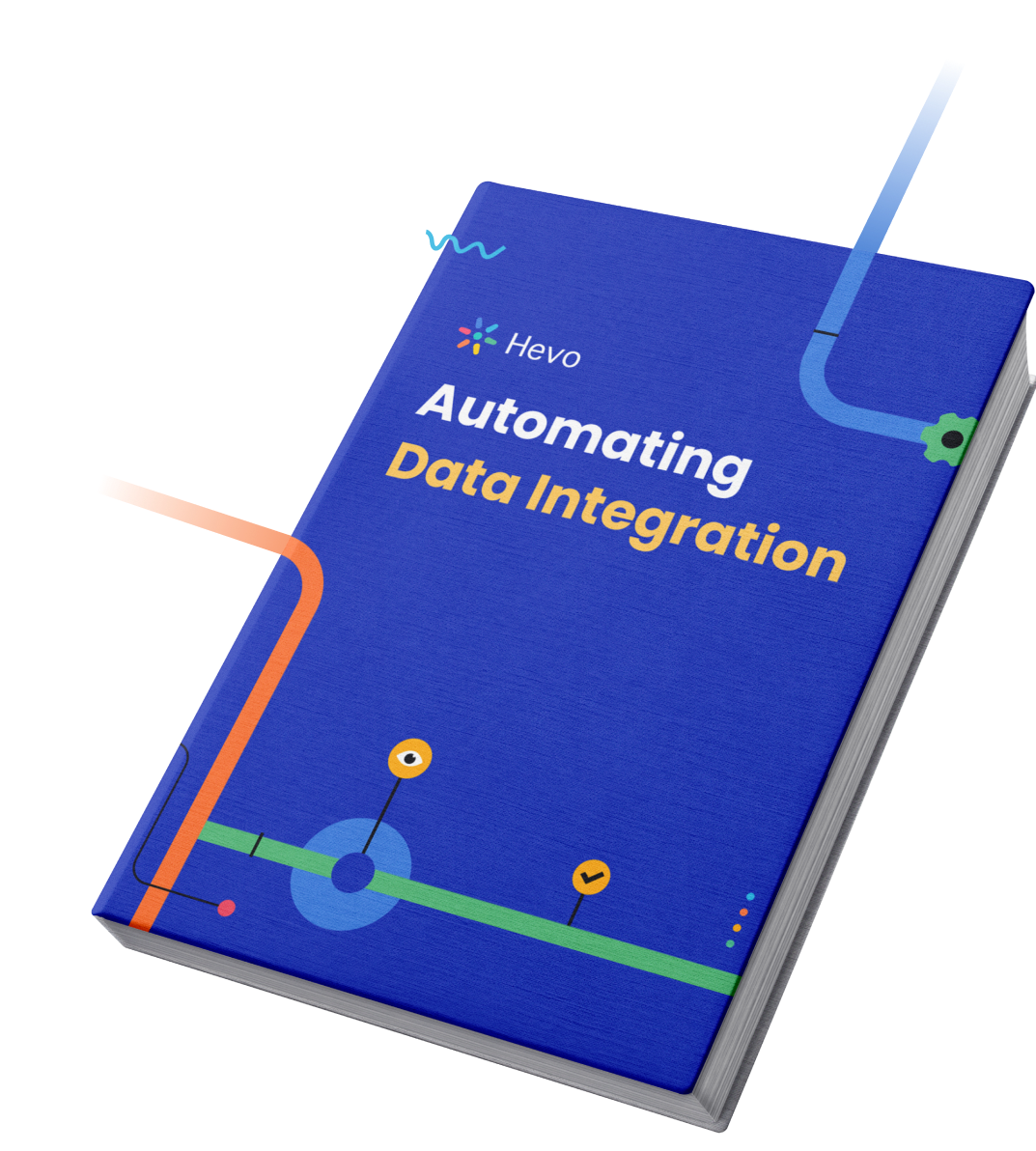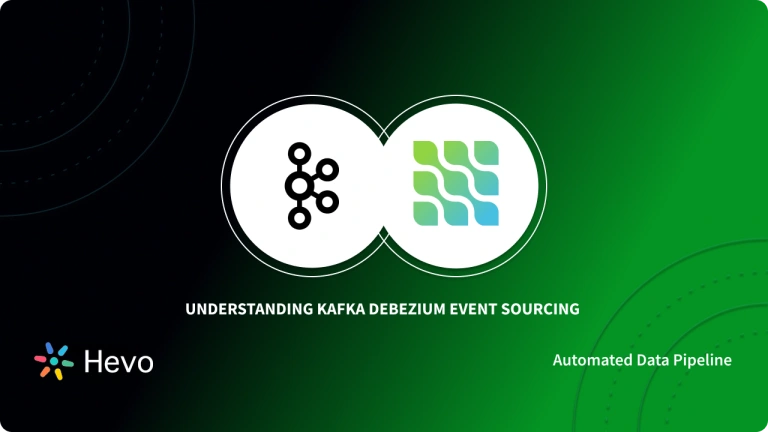The importance of Apache Spark in the Big Data industry stems from its in-memory data processing, which makes it a faster data processing engine than the other options currently available. Apache Spark has huge potential for the development of industry Big Data business
This article explains 2 methods to set up Apache Spark ETL integration. The first method that involves building a simple Apache Spark ETL is using Pyspark to load JSON data into a PostgreSQL Database. The second method automates the ETL process using the Hevo Data Pipeline. Read along to decide which method suits you the best!
Table of Contents
What is Apache Spark?
Apache Spark is an open-source analytics and data processing engine used to work with large-scale, distributed datasets. Spark supports Java, Scala, R, and Python. It is used by data scientists and developers to rapidly perform ETL jobs on large-scale data from IoT devices, sensors, etc. Spark also has a Python DataFrame API that can read a JSON file into a DataFrame automatically inferring the schema.
Spark can run on Hadoop, EC2, Kubernetes, or the cloud, or using its standalone cluster mode. Spark has libraries like SQL and DataFrames, GraphX, Spark Streaming, and MLib which can be combined in the same application.
What is an ETL?

ETL refers to the transfer and transformation of data from one system to another using data pipelines. Data is extracted from a source, or multiple sources, often to move it to a unified platform such as a data lake or a data warehouse to deliver analytics and business intelligence.
Data existing in several sources usually needs to be prepared before loading it to the destination to get it into the right format suiting the organization’s business needs.
Extraction refers to the extraction of data from the source(s). This is considered to be the most important part of the ETL process because it sets the stage for success for the following stages. A data warehouse has data in many different formats (such as parquet, JSON, CSV, TSV, XML, etc.), and from a wide variety of sources (SaaS tools, advertising platforms, FlatFiles, NoSQL databases, RDBMS, etc.).
Transformation is the stage that ensures that data is ‘clean’ and is in the correct format. When data is extracted from disparate systems, it is necessary to ensure that they interact properly. Cleaning is a very important part of the transformation. Transformation is dependent on specific business needs. Sometimes, only some of the columns are relevant and other times, tables or columns might have to be joined together. Duplicate rows might have to be eliminated, and null columns may have to be dealt with. All of the above and many other modifications of data are handled during the transformation stage.
Loading deals with moving the data into the final target. This doesn’t necessarily have to be a data lake or a warehouse. It can even be a flat file. Where the data is loaded and how often depends on the business needs. Data can be loaded hourly, daily, weekly, or monthly.
To learn more about the steps on building an ETL Pipeline, visit our comprehensive blog here.
Benefits of Building ETL pipelines with Apache Spark
- CI/CD integration: Spark can be integrated into a CI/CD pipeline for data engineering that can automate ETL testing and the deployment of ETL workflows to ensure efficiency, reduce errors, and assure consistent data delivery.
- Unified Processing: Spark allows users to access batch and real-time processing for more complex analytics and machine learning models under one system.
- Faster speed: Due to in-memory processing and optimized execution, Spark improves the speed of ETL tasks manyfold compared to traditional frameworks.
- Fault Tolerance: Spark provides fault tolerance through its built-in design, meaning that it assures an automatic recovery mechanism and data integrity.

Using PySpark ETL to Set Up Apache Spark Integration
This method uses Pyspark to implement the ETL process and transfer data to the desired destination. Apache Spark ETL integration using this method can be performed using the following 3 steps:
Step 1: Extraction
To get PySpark working, you need to use the find spark package. SparkContext is the object that manages the cluster connections. It connects to the cluster managers which in turn run the tasks. SparkContext object reads data into an RDD (Spark’s core data structure).
Spark has the ability to read JSON files, infer the schema automatically, and load it as a DataFrame. It does this using Spark SQL. So instead of using the SparkContext object, let us use the SparkSQL object.
Here we import SQLContext, instantiate the SQLContext object, and then use it to read the valid JSON file, assigning it to a DataFrame object.
Step 2: Transformation
Transformation involves several processes whose purpose is to clean and format the data to suit the needs of the business. You can remove missing data, duplicate data, join columns to create new columns, filter out rows, etc.
For example, you might filter out the rows to get the data of just the adults (ages 18 and above). If you don’t need to make any changes, you don’t have to transform.
Step 3: Loading
We extracted and transformed our data from a JSON file. Now, let us load the pop_data DataFrame into the destination. We will load it into the local PostgreSQL Database so that it can be analyzed.
Psycopg2 is an open-source Python library that is widely used to communicate with the PostgreSQL server. The psycopg2.connect function is used to connect to the Database. Once the connection is established, a ‘cursor’ is used to execute commands.
First, we create a table in PostgreSQL that will be populated later with the data. Using an INSERT statement we input the data as a list of tuples.
When we query the Database, using the SELECT statement, it can be seen that the relevant output is produced. PostgreSQL uses transactions to ensure that all the queries in a transaction block are executed in one go. So the connection.commit() method is used to commit the changes.
Best Practices and Use Cases of Using PySpark ETL
Here are a few ETL Best Practices
Best Practices
- Optimize Data Processing – Use partitioning and caching to speed up queries.
- Handle Large Datasets Efficiently – Leverage Spark’s distributed computing for scalability.
- Ensure Data Quality – Clean, validate, and transform data before loading.
- Use Schema Enforcement – Define schemas to prevent inconsistent data.
- Monitor & Debug Jobs – Track performance and handle failures proactively.
Use Cases
- Financial Data Processing – ETL in finance can handle transactions, risk assessments, and fraud detection.
- Real-Time Data Processing – Analyze streaming ETL data from IoT or web applications.
- Data Warehousing – Extract, transform, and load structured data for analytics.
- Machine Learning Pipelines – Preprocess large datasets for AI/ML models.
- Log Analysis – Process and analyze server logs for insights.
Using Hevo for Setting up Your ETL Pipeline
Hevo Data, a No-code Data Pipeline, helps you directly transfer data from Apache Spark and 100+ data sources to Databases, Data Warehouses, BI tools, or a destination of your choice in a completely hassle-free & automated manner. Hevo is fully managed and completely automates the process of not only loading data from your desired source but also enriching the data and transforming it into an analysis-ready form without having to write a single line of code. Its fault-tolerant architecture ensures that the data is handled in a secure, consistent manner with zero data loss.
Hevo Data takes care of all your data preprocessing needs and lets you focus on key business activities and draw a much powerful insight on how to generate more leads, retain customers, and take your business to new heights of profitability. It provides a consistent & reliable solution to manage data in real-time and always have analysis-ready data in your desired destination.
More Reasons to Choose Hevo Data:
- Faster Implementation: A very quick 2-stage process to get your pipeline setup. After that, everything’s automated while you watch data sync to Snowflake or any other destination in real-time.
- Fully Managed Service & Live Support: Every aspect of the data transfer process is fully managed by Hevo. Hevo also provides a dedicated team of talented support engineers to guide you through any issues that arise.
- Real-time Alerts & Notifications: With Hevo, you are always in the know about your data transfer pipelines. Receive real-time multiple-format notifications across your various devices.
- 100% Complete & Accurate Data Transfer: The entire ETL spectrum is covered by Hevo. Quality rules and expert engineering also ensure that data is always 100% transmitted so there’s no risk of data corruption or missing data.
- Scalability Assured: Hevo simply scales to meet your needs today and tomorrow thanks to its world-class infrastructure and platform.
- A wide array of Data Source Integrations: Hevo can bring data from not only Facebook Ads, but a wide array of data sources ranging from Sales and Marketing tools to Databases and more.
Challenges of building ETL pipelines with Apache Spark
The ETL challenges with Apache Spark are as follows-
- Resource Management: You will face performance bottlenecks if the resources are not managed properly. Memory management may be a bit tricky since a failure in Spark jobs could either be due to insufficient memory or inefficient use.
- Steeper Learning Curve: It is complex to understand, and Spark requires significant time and effort to understand its ETL architecture, APIs, and best practices.
- Performance Tuning: Sensitive parameters related to memory, parallelism, and data partitioning have to be fine-tuned to obtain good performance from Spark.
- Writing and Maintaining Code: The complexity can make the ETL code difficult to write and maintain over time. Additionally, Spark is difficult to tune, which can add to the complexity and maintenance challenges.
Conclusion
This article outlined a basic Apache Spark ETL process using PySpark from a single source to a Database. However, in reality, you will be dealing with multiple disparate sources. You will need several complex transformations performed on the fly. You might have to load data into a Cloud Data Warehouse. All of this can get very complicated. It requires a lot of expertise at every level of the process. But Hevo Data can guarantee you smooth storage and processing.
Hevo is a No-code data pipeline. It has pre-built integrations with 150+ sources. You can connect your SaaS platforms, Databases, etc. to any Data Warehouse of your choice, without writing any code or worrying about maintenance.
Want to take Hevo for a spin? Sign up for a 14-day free trial and experience the feature-rich Hevo suite first hand.
FAQ
1. Is Apache Spark Used for ETL?
Yes, Apache Spark is widely used for ETL.
2. Is PySpark Good for ETL?
Yes, PySpark is effective for ETL tasks. It provides an easy-to-use interface for writing ETL pipelines in Python, leveraging Spark’s distributed computing power for handling large datasets.
3. What Is the Difference Between Kafka and Spark ETL?
Kafka: Primarily a real-time data streaming platform that handles the ingestion and transportation of data streams.
Spark ETL: A framework for processing and transforming large datasets, capable of both batch and real-time ETL, often used alongside Kafka for processing the data streams Kafka ingests.








